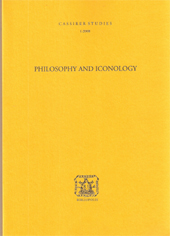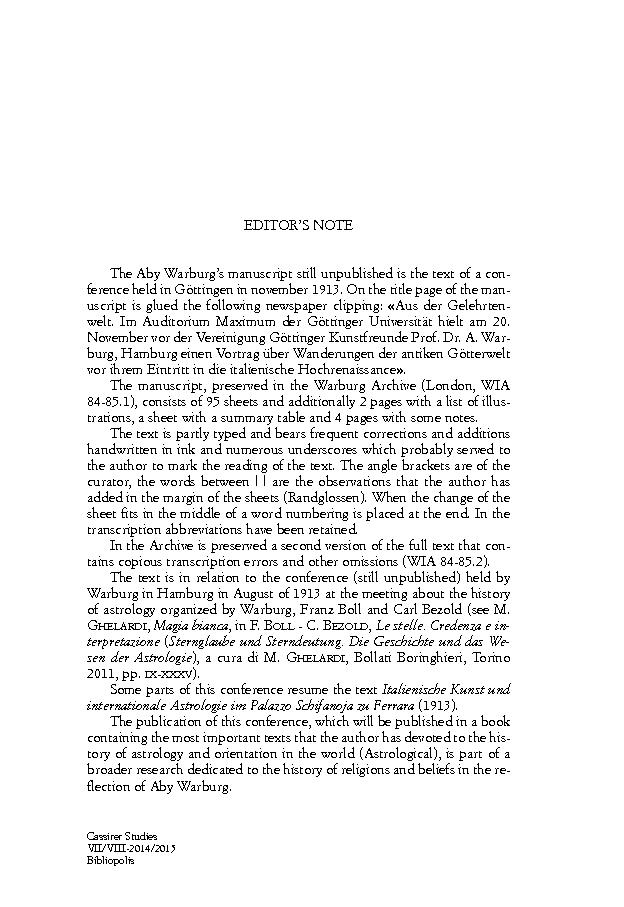Die Wanderungen der antiken Götterwelt vor ihrem Eintritt in die italienische Hochrenaissance
P. 15-56
The manuscript by Aby Warburg The migration of the world of the ancient gods and their entry into the high Italian Renaissance, and still unpublished even in German, is the text of a conference held in Göttingen in November 1913. The attempt to retrace, from the historical-artistic point of view, the migration of the ancient world of the gods until their entry into the upper Italian Renaissance, presupposes for Warburg that we consider the more general question of the role of the influence of the Ancient on the civilization of the Italian Renaissance based on an enlargement of the geographical and chronological assumption.Only if we consider the restoration of classical antiquity in Italy as a comparison within a wider community that, including East and West, had never ceased to cultivate in its own way and seriously the memory of the ancient world of the gods,
then understands why the stylistic change created by Italian art in conceiving the ancient figures of the gods must be considered and studied as a cultural event of European importance. In order to conceive the character of this confrontation within this cultural community, Warburg traces the area and lines of migration of the ancient world of gods from West to East and from South to North. The East and the West equally shared the administration of this pagan heritage, although they guaranteed a shelter under the form of pagan idols to their bitter enemies of the new religiosity, enemies never completely vanquished.The Warburg thesis is that the pagan gods never died and that they survived, despite the barbarized and Christianized iconography, in other forms and then resurrected in their identity in the Italian high-Renaissance figurative art. The pagan gods had survived, in short, as "incarnations of ideas" that would be impressed in Renaissance art where they would resume their distant appearance.
On the walls and vaults of the palaces, or in the domes of the chapels, the still alive contents were rejoined to the previous forms: irreducible to the pure decorative function, a whole "universe of planetary gods, heroes and allegories" claimed their ancestry. [Publisher's text]
Is part of
Cassirer studies : VII/VIII, 2014/2015-
Articles from the same issue (available individually)
-
-
Information
DOI: 10.1400/263926
ISSN: 2038-6575
DISCIPLINES



